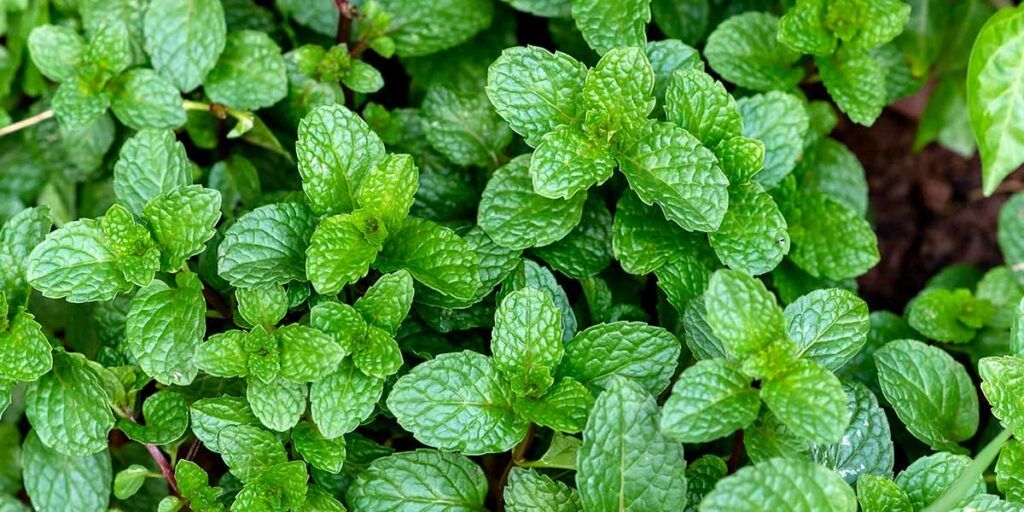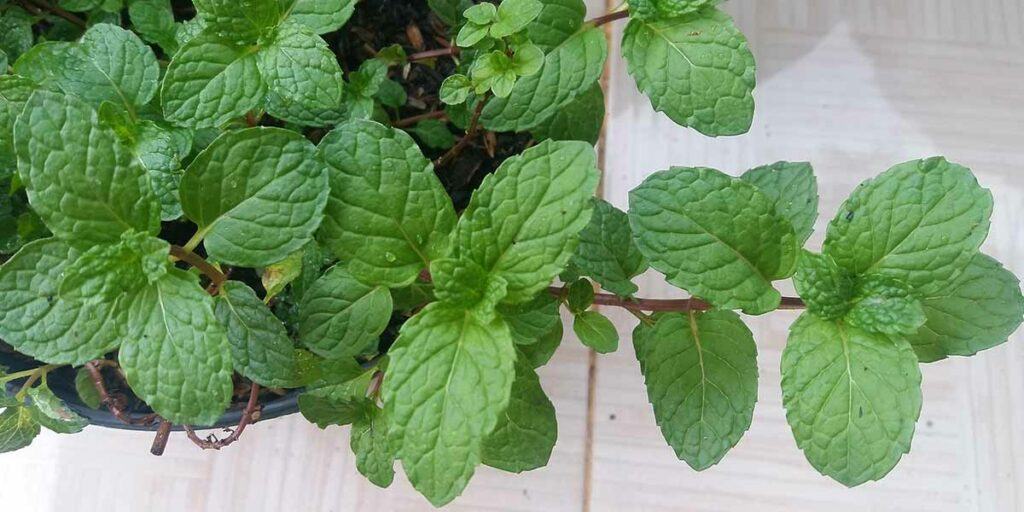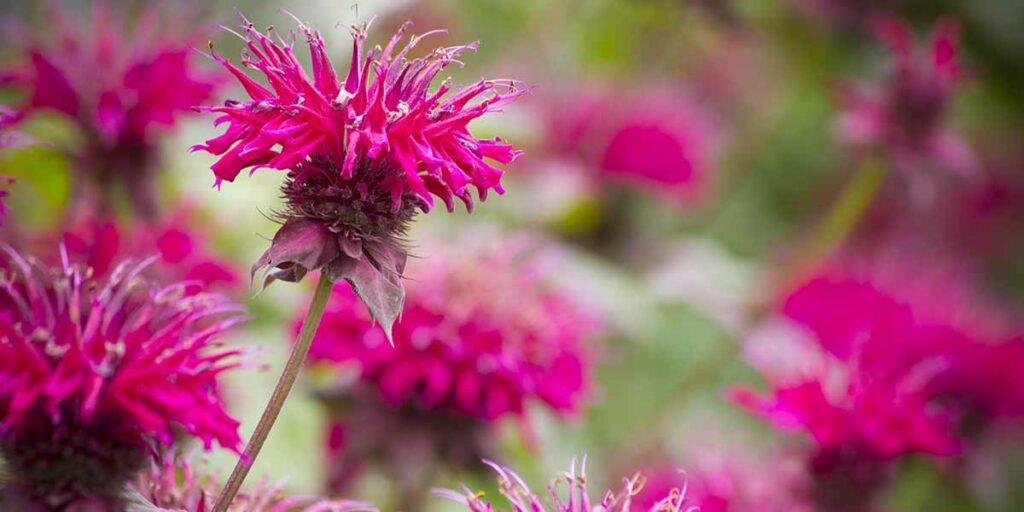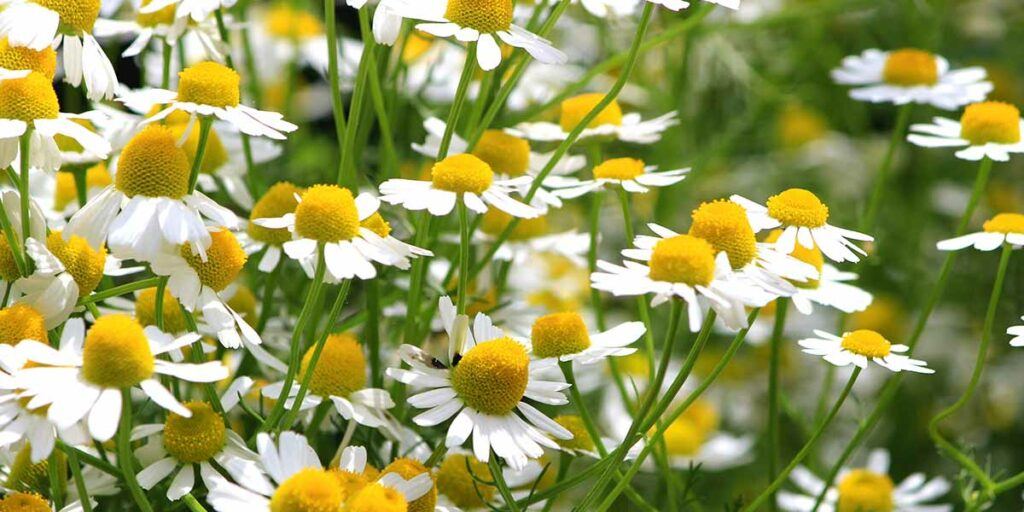
By Angelo Randaci, Earth’s Ally Horticulturist
Angelo’s passion for plants has led him to explore many areas of horticulture including research, grounds management, technical training, design and nursery management.
8 Natural Herbs to Grow for Tea
Imagine walking into your garden, picking an aromatic handful of leaves from your favorite herb plants, and making a cup of delicious tea. You can easily grow herbal tea plants in your garden to suit your taste along with their many health benefits. To help you get started here is a partial list of brew-friendly plants that can be used to make infusions that will soothe and restore, straight from your garden.

#1 Elderberry (Sambucus nigra)
Elderberries are one of the easiest and most versatile shrubs to grow in a tea garden. They grow well in either full or part sunny locations and make a perfect backdrop for your shorter tea garden plants. The newer available varieties have highly ornamental characteristics such as purple or green and white variegated foliage. Growing elderberry is fairly straightforward. Elderberry gardens thrive in soils with plenty of moisture and even wet areas of your garden. For best fruit production plant at least two different varieties together. Elderberry tea is made from dried, ripe elderberries that have been boiled in water. The berries are rich in highly bioactive antioxidants which support the immune system. They could help soothe inflammation, lessen stress, and help protect your heart.

#2 Peppermint (Mentha piperita)
Of all the herbal teas, peppermint tea is the most consumed throughout the world. Peppermint oil from the leaves contain high amounts of menthol which give the tea its strong, sharp, minty and cooling taste. Peppermint tea is said to be good for increasing alertness, enhancing mood, improving memory, helping people sleep, improving bad breath, boosting the immune system, and helping with symptoms of a common cold. Peppermint plant gardens are vigorous perennials that prefer moist but well-drained sites in full to partial sunny conditions. Peppermint plants have a running habit and will quickly take over an area if not managed by a containment of some sort.

#3 Spearmint (Mentha spicata)
Because spearmint contains less menthol than peppermint, it tends to be sweeter and milder with many of the same benefits of peppermint tea. Spearmint also has a running habit and is best contained and managed in the garden.

#4 Bee Balm (Monarda didyma)
It is believed that after the English tea was destroyed during the Boston Tea Party revolution, Bee Balm tea was used as a substitute. Because of its high thymol content, a strong antiseptic also found in thyme, bee balm is traditionally used for a variety of ailments including colds, flu, upper respiratory problems, fevers, and used topically for wounds. The species Monarda didyma is a beautiful garden perennial that attracts bees (hence the name bee balm) as well as other pollinators.

#5 Holy Basil (Ocimum tenuiflorum)
Holy basil is an Ayurvedic herb widely used as a therapeutic tea. Holy Basil tea is described as “The Incomparable One”, “Elixir of Life,” and “Queen of the Herbs.” This is another member of the mint family closely related to culinary basil. The Holy Basil plant has been used for centuries to cure symptoms of many diseases and ailments; asthma, bronchitis, colds, congestion, coughs and flu. It is said to promote a healthy response to stress, promote longevity, and nourish the mind. Inhaling the steam from a fresh cup of tea may help clear sinuses.

#6 Rose Petal/Rose Hip Tea
Roses with their timeless beauty and fragrance are often the centerpiece of the tea garden. Harvested buds, petals and hips add a tasty floral fragrance and tangy flavor when added either alone or with other loose tea combinations. Besides making a delicious red rose tea, rose petals may help lessen stress and anxiety, improve digestion, reduce inflammation, and encourage healthy skin. Because rose hips are high in antioxidants and one of the best sources of vitamin C they are often used in vitamin supplements. Choose varieties of roses for flower fragrance and large rose hips.
*Note about using rose petal tea: Do not use or eat flowers from nurseries, florists, or garden centers. The pesticides used may not be labeled for food crops. Treat your rose garden with Earth’s Ally Disease Control and Earth’s Ally Insect Control.

#7 Lavender (Lavandula angustifolia)
Lavender is known for its soothing scent and oil. Lavender flowers and leaves are used in aromatherapy, alternative medicine, beauty products as well as herbal tea. Lavender tea is made from flower buds that grow on long, upright, purple flower spikes. Drinking lavender tea may improve your mood and have a general calming effect. It may also improve sleep quality and skin health. In the tea garden, lavender performs as a reliable perennial in zones 5 through 9 if grown in well-draining soil in full sun.

#8 German Chamomile (Matricaria recutita) and Roman Chamomile (Matricaria nobile)
German chamomile is an annual and must be planted every year. It grows one to two feet in most any type of soil that is well-drained. Roman Chamomile (Matricaria nobile), on the other hand, is a perennial hardy in zones 4-9. This low growing chamomile will look its best when grown between flagstones or along pathways. Chamomile tea is made from the dried flowers of either species. Chamomile tea has long been used as a traditional folk remedy for a wide range of health issues. Some of its reported uses include; lowering blood sugar, slowing osteoporosis, reducing inflammation and helping with sleep and relaxation.
When preparing your tea harvest of fresh leaves, it is best to crush the leaves before brewing. Crush leaves using a mortar and pestle, kitchen utensil, or just use your hands. You do not need to crush flowers. If drying your herbs, you can hang them out of direct sunlight in an area with low humidity or simply place loose leaves and flowers on a tray or in a basket.
Here are a few final tips to gardening with tea-friendly herbs:
You can either grow them separately in a tea garden theme or include them in with your vegetables, annuals or perennial border. Many of them will attract pollinators while discouraging unwanted pests. Use them to add variety and flavor to your daily meals.
When growing your own, you can choose varieties that you will not find in your local store. There are some 30 different types of basil alone. Above all, have fun with the process; the growing, harvesting, and using these wonderful, healthy herbs.
Your tea garden herbs are susceptible to garden pests such as aphids, spider mites, and whiteflies. Avoid non-organic pesticides in your garden by using Earth’s Ally Insect Control and Repellent. It is safe for all your plants and will not harm bees or other pollinators.
We’d love to hear how Earth’s Ally is helping you grow a tea garden. Share your experience and stay connected with the #EarthsAlly community on Facebook, Instagram and Twitter for access to our latest blog posts, giveaways and exclusive promotions.
